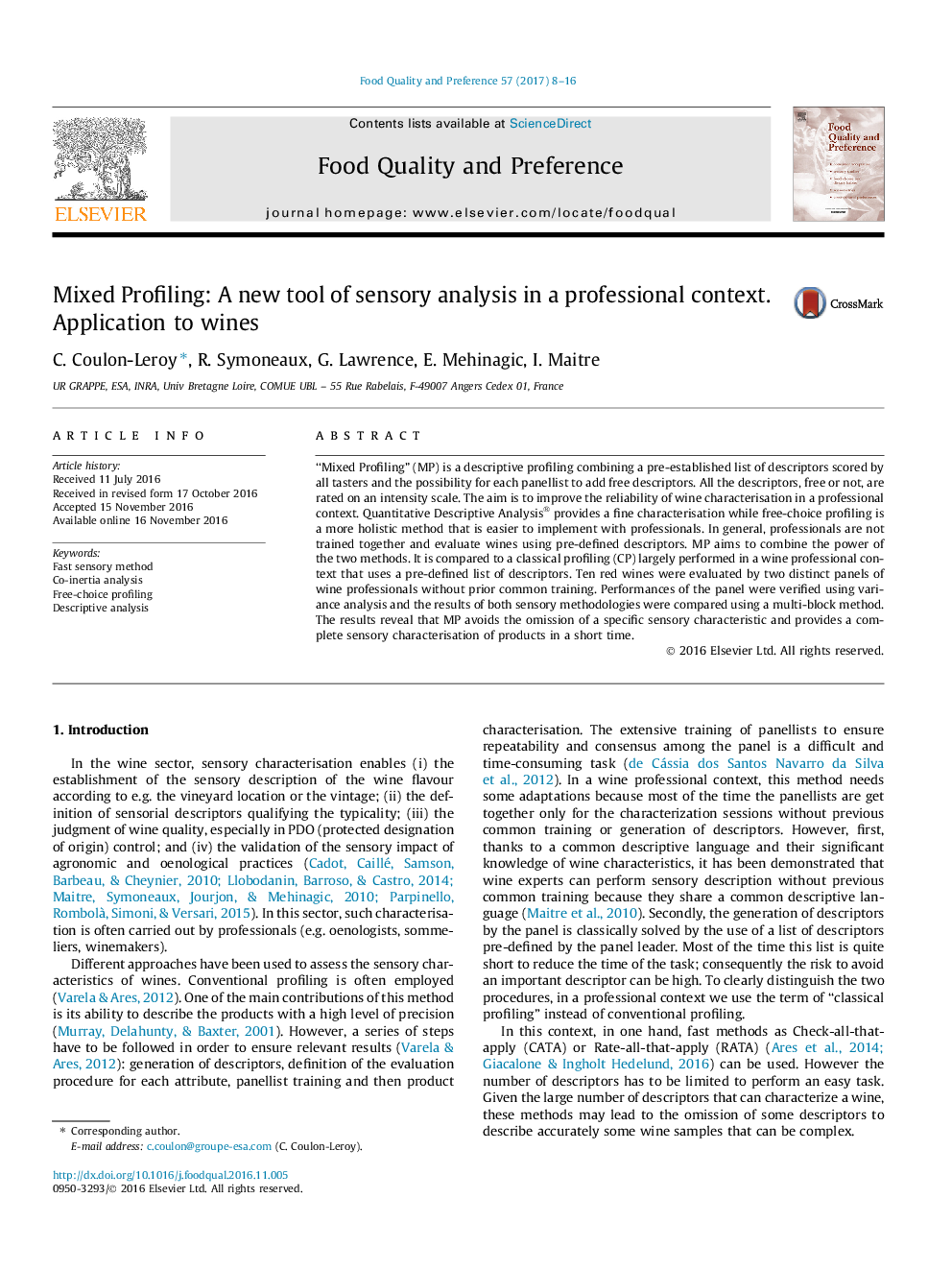| Article ID | Journal | Published Year | Pages | File Type |
|---|---|---|---|---|
| 5736059 | Food Quality and Preference | 2017 | 9 Pages |
â¢The power of conventional profiling and free-choice profiling can be combined to avoid the omission of an important specific sensory descriptor.â¢Mixed Profiling can highlight precise sensory descriptors.â¢Mixed Profiling could be used by trained or untrained panels.â¢Mixed Profiling is a consistent and exhaustive methodology for use by wine experts.
“Mixed Profiling” (MP) is a descriptive profiling combining a pre-established list of descriptors scored by all tasters and the possibility for each panellist to add free descriptors. All the descriptors, free or not, are rated on an intensity scale. The aim is to improve the reliability of wine characterisation in a professional context. Quantitative Descriptive Analysis® provides a fine characterisation while free-choice profiling is a more holistic method that is easier to implement with professionals. In general, professionals are not trained together and evaluate wines using pre-defined descriptors. MP aims to combine the power of the two methods. It is compared to a classical profiling (CP) largely performed in a wine professional context that uses a pre-defined list of descriptors. Ten red wines were evaluated by two distinct panels of wine professionals without prior common training. Performances of the panel were verified using variance analysis and the results of both sensory methodologies were compared using a multi-block method. The results reveal that MP avoids the omission of a specific sensory characteristic and provides a complete sensory characterisation of products in a short time.
